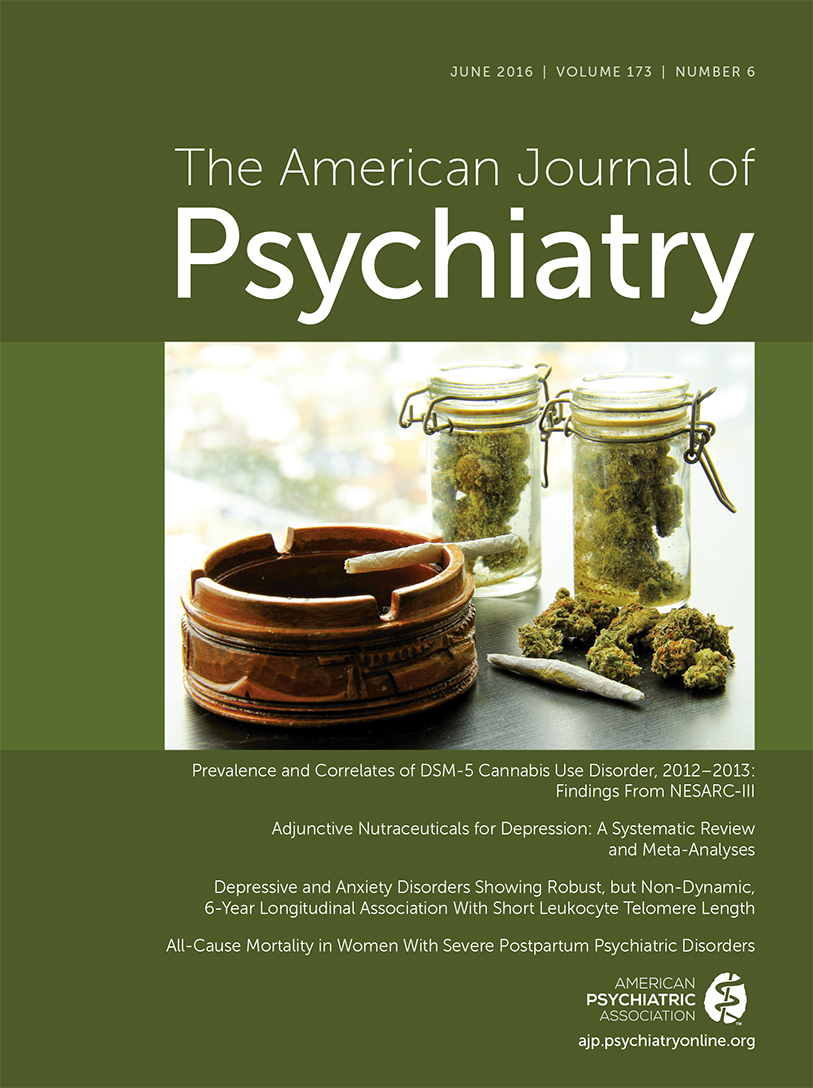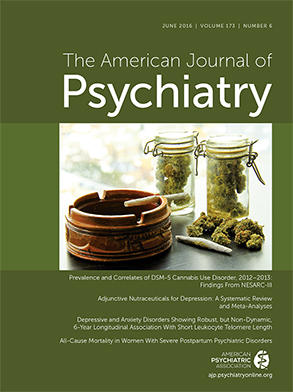Troubling psychotic symptoms and impaired social and vocational functioning are prominent among the areas that receive attention in treating people with schizophrenia. The study by Tiihonen and colleagues in this issue (
1) reminds us that among the areas requiring attention is one of the most fundamental: life expectancy. Olfson and colleagues (
2) recently reported mortality data derived from a sample of more than 1.1 million individuals with schizophrenia in the United States between ages 20 and 64. They found that the mean potential life lost compared with the general population was 28.5 years. Natural causes (the most common being cardiovascular disease, cancer, diabetes, and chronic obstructive pulmonary disease) accounted for most of the 65,553 deaths due to known causes; 1 in 7 deaths with known cause were due to unnatural causes (the most common being accidents, which occurred twice as frequently as suicide, the second most common). This mortality crisis for people with schizophrenia is not confined to the United States. A recent meta-analysis of studies conducted in a total of 29 countries found that 350,000 deaths per year worldwide were attributed to psychotic disorders (
3). The mortality disparity between people with schizophrenia and the general population may be increasing as the health of the general population, but not that of people with schizophrenia, improves over time (
4).
Factors contributing to the excess mortality include social and economic factors (e.g., access to health care), elevated smoking rates, and cardiometabolic risk factors that are often present even early in the illness (
5). Multiple interventions are needed to address these and other factors to improve life expectancy.
Tiihonen et al. provide important data on the question of whether the medications typically prescribed for schizophrenia contribute to excess mortality. Using Swedish national databases, they obtained mortality data over a 5-year period for 21,492 people with schizophrenia. For each of three medication classes—antipsychotics, antidepressants, and benzodiazepines—individuals were characterized as either taking no medication in that class over the follow-up period, taking small doses or intermittent doses, taking moderate doses, or taking high doses. The data have a number of important implications for clinical practice.
First, the largest group was that of individuals receiving prescriptions for all three medication classes (N=6,711), followed by individuals receiving prescriptions for a benzodiazepine and an antipsychotic (N=6,246) and individuals receiving prescriptions for antipsychotics alone (N=4,828). These data remind us that when considering health outcomes, we need to consider the potential effect of the full array of medications prescribed. An exclusive focus on antipsychotics is inadequate given the number of patients who are treated with multiple medications.
Second, compared with individuals with no exposure to that medication type, those taking either antipsychotics or antidepressants had a lower risk of dying, even after adjusting for demographic characteristics and amount of inpatient and outpatient contact. This is reassuring given the concern that the cardiometabolic effects of antipsychotics could contribute to mortality. The data suggest that we should include potential decreased mortality as a benefit when evaluating the benefits and risks of long-term antipsychotic and antidepressant treatment in schizophrenia. Despite the lower mortality among patients taking antipsychotics, clinicians should diligently continue to follow guideline recommendations for health monitoring of patients taking antipsychotics. Even antipsychotics with more favorable metabolic side effect profiles can have adverse metabolic effects after only short durations of treatment (
6).
Third, in contrast with the results with antidepressants and antipsychotics, patients treated with benzodiazepines at moderate or high doses had worse mortality than those not treated with benzodiazepines. This parallels findings of increased mortality with chronic benzodiazepine use in the general population (
7,
8). Short-term treatment with benzodiazepines in schizophrenia can be very useful for decreasing anxiety and agitation (especially when substance withdrawal may be a factor) and the acute management of akathisia. However, long-term use, as studied by Tiihonen et al., should be employed only after other approaches have been tried and after careful consideration of the definite risks. Nonpharmacological treatments can be effective for anxiety and insomnia. Off-label use of pharmacological agents other than benzodiazepines for these symptoms is common, but we lack long-term outcome data on these approaches, so clinicians should use this strategy only after careful consideration of potential risks.
Perhaps the most important clinical finding of the study is, sadly, one that we have come to expect from previous studies, namely, that the overall mortality of the sample was greatly elevated (4.8-fold compared with the general population). It is easy for busy clinicians to concentrate on the management of acute problems and lose focus on long-term outcomes. Furthermore, clinicians often are reluctant to change a medication regime that may have produced a degree of symptom control even if it is not optimal for long-term management. In the sample reported by Tiihonen et al., more than a third of patients were treated with benzodiazepines chronically, even though guidelines recommend only short-term use. The by now overwhelming data strongly suggest that we need to take a long-term perspective and act accordingly. For the individual clinician, this will consist of providing optimal medication treatment and ensuring that patients receive appropriate medical monitoring and management of medical issues. For the field as a whole, we need to educate policy makers and our colleagues in other branches of medicine about the mortality crisis among people with schizophrenia and other serious mental illnesses and advocate for proper care for our patients.

